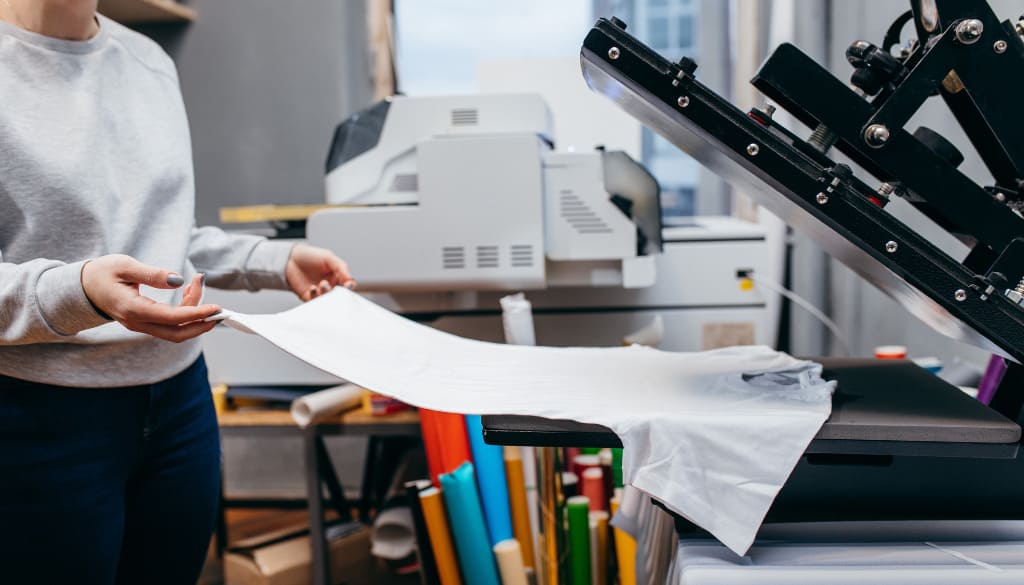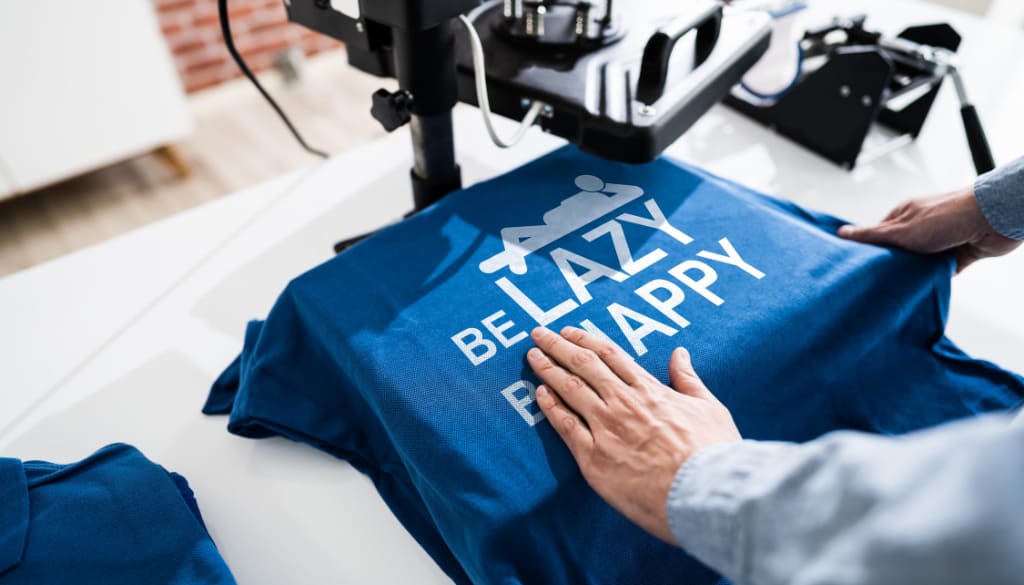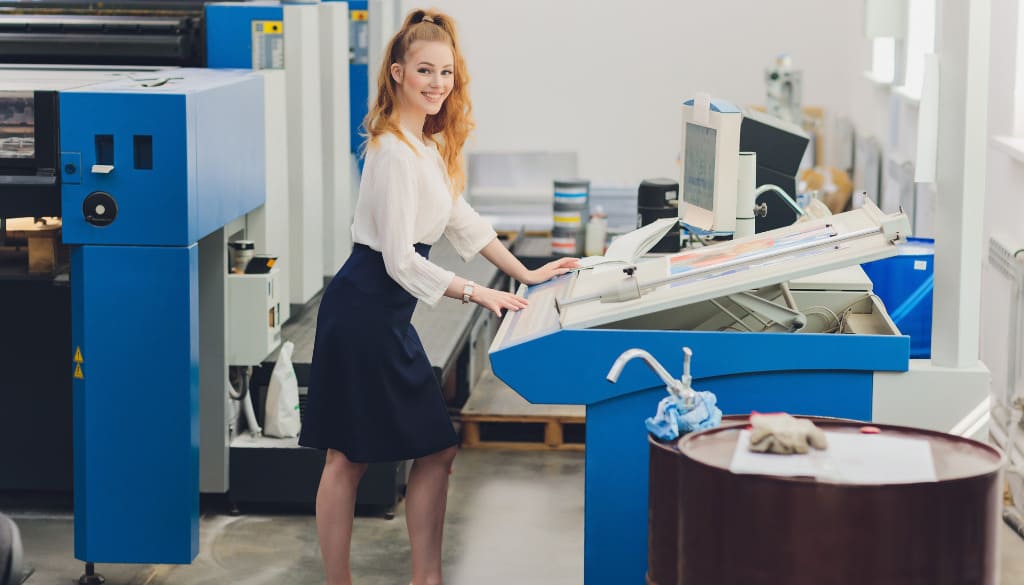Print-on-demand (POD) is becoming an attractive business model thanks to its low startup costs, high flexibility, and rapid scalability. Instead of investing heavily in production and inventory, sellers can focus on design and marketing while fulfillment partners handle the rest automatically. However, POD is not a “one-size-fits-all” solution. To succeed, you need a clear understanding of the pros and cons of print-on-demand to determine whether it aligns with your business strategy. This article offers a comprehensive analysis, compares POD with bulk production, and provides an objective evaluation to help you answer the key question: “Should you start a print-on-demand business?”
What Is Print on Demand (POD)?
POD is an e-commerce business model that allows you to create personalized products with your unique style without mass production or inventory storage. Instead of investing upfront in manufacturing, you only print items when an order is placed, and the entire process is handled in partnership with a fulfillment provider like FlashShip.
The core appeal of the POD model lies in this: you don’t need to pre-purchase stock, manage inventory, run a factory, or handle packaging and shipping. All the complex logistics are taken care of by the fulfillment partner.
As a result, POD opens up a flexible business opportunity for anyone from creative individuals and aspiring entrepreneurs to experienced sellers looking to diversify their product offerings. Your main focus is reduced to just two critical factors: compelling design and effective marketing. These are the keys to building a successful and sustainable POD brand.

Pros and Cons of Print on Demand (POD)
Like any business model, POD has its advantages and disadvantages. Understanding both sides will help you build a solid and realistic business strategy.
1. Pros
Low Startup Costs
One of the biggest advantages of the POD model is that you don’t need a large upfront investment. There’s no need to purchase equipment, print in bulk, rent a space, or manage inventory. This eliminates the risk of unsold stock and wasted production costs.
You can get started with just a few designs and an account on e-commerce platforms like Shopify, Etsy, Amazon, or TikTok Shop. Costs are only incurred after an order is placed, allowing you to manage cash flow more effectively during the early stages.
Flexibility in Creativity and Product Testing
With POD, your creative potential is virtually limitless. A single design can be applied to various product types like t-shirts, hoodies, mugs, posters, and canvas prints. With just a few clicks, you can launch a new item in your store.
This ability to experiment quickly allows you to test market reactions, validate new ideas, and stay on top of trends without the financial risks associated with traditional manufacturing. This is a key advantage in the POD industry, where customer preferences shift rapidly.
Automated Production and Fulfillment Process
Most modern POD platforms support full automation of post-sale processes from printing and packaging to shipping. Once a customer places an order and completes payment, the order is sent directly to a fulfillment partner like FlashPOD or Printful for processing and delivery.
This automation saves you time and effort while minimizing manual errors. It also allows you to focus on core business areas such as product development, brand building, customer service, and ad optimization, all essential for long-term profitability.
Easy Global Market Expansion
Another major benefit of POD is the ability to sell across borders. You can run your business from Vietnam and serve customers in the U.S., Canada, Europe, or Australia without needing warehouses or local offices in those countries.
By partnering with international fulfill POD providers like FlashPOD USA, you can deliver products quickly and professionally, enhancing customer experience and building a global brand. Expanding into international markets has never been easier with POD.
Scalable and Replicable Business Model
Once you identify a winning product, scaling up becomes easy. You can increase ad budgets, replicate successful designs, or apply a popular design to various product types.
Because you’re not constrained by in-house production capacity or bulk printing costs, you can grow your business quickly without hiring more staff or expanding factory space. This is especially beneficial for sellers aiming for rapid and sustainable growth.

2. Cons
- Lower profit margins: Since you produce and print each item individually, the production cost (base cost) per unit is higher than mass production. In addition, you also have to pay for fulfillment services. This directly impacts your profit margin. To succeed, you need a smart pricing strategy and the ability to sell at scale.
- Dependency on suppliers: Product quality, printing time, and shipping speed are entirely in the hands of your fulfillment partner. Any mistake on their end—such as printing errors, delayed shipping, or poor product quality—can directly damage your brand reputation and customer satisfaction. Therefore, choosing a reliable, transparent, and capable partner like FlashShip is critical to your business’s survival.
- Limited product customization and branding options: Although you can print your designs on products, deeper customization options are usually limited. You work with pre-defined product blanks (e.g., T-shirts, mugs) available in the supplier’s catalog. Advanced branding features like custom labels, personalized packaging, or inserts may not be supported or may incur additional costs.
- Longer processing and shipping times: The POD process includes several stages: order receipt, printing, quality check, packaging, and shipping. Naturally, this takes more time than simply picking and shipping a product from stock. It’s crucial to communicate estimated delivery times to customers to avoid disappointment.
- Fierce competition: Since this model doesn’t require heavy financial investment, POD has become an attractive option for many. As a result, the market is increasingly saturated. To stand out, you not only need appealing designs but also a strong, unique brand, a well-defined niche, and a superior marketing strategy compared to your competitors.
Quick Comparison: Print-on-Demand vs. Mass Production
To better visualize the differences, let’s place these two models side by side and compare them across key criteria:
|
Criteria |
Print-on-Demand |
Mass Production |
|
Initial Investment |
Very low, almost zero |
Very high |
|
Inventory Risk |
None |
Very high |
|
Profit Margin per Product |
Lower |
Higher |
|
Inventory Management |
Not required |
Complex and costly |
|
Flexibility |
Very high |
Low |
|
Product Launch Speed |
Very fast |
Slow |
|
Product Variety |
Highly diverse |
Limited |
|
Quality Control |
Depends on the fulfillment partner |
Full control |
|
Scalability |
Easy |
Difficult |
Who Should (and Shouldn’t) Choose the Print-on-Demand Model?
Understanding the core nature of POD helps you determine whether it’s the right path for your business journey.

POD is a good fit if you are:
- A beginner in eCommerce: If you’re just getting started with an online business and are concerned about upfront investment or inventory risk, POD is an ideal low-risk starting point.
- An artist, designer, or content creator: POD offers a great way to monetize your creativity. You can sell your artwork or unique designs to your fanbase without handling the production process.
- An influencer or personal brand owner: Create your line of branded merchandise to strengthen your connection with followers and open up a new stream of income.
- A business testing new products or markets: Instead of investing heavily in mass production for an unproven idea, you can use POD to test market reactions with minimal cost.
- A niche seller looking to build a personal brand: POD allows you to target very specific communities (e.g., corgi lovers, book club members, fans of a particular show) that are often overlooked by mass production models.
POD may not be the best fit if you are:
- Focused on exclusive, high-end product quality: If your brand vision includes custom fabrics, premium materials, or intricate construction, POD may not meet your expectations. In this case, working directly with manufacturers (mass production) would be more suitable.
- Looking to maximize profit per unit: If your goal is to achieve the highest possible margin per order and you have the capital to invest upfront, wholesale or bulk production could offer better financial returns.
- Operating a brand that requires same-day delivery: POD’s production and fulfillment timeline may not align with businesses that promise ultra-fast or same-day shipping.
- Someone who wants full control over every process: If you need to personally manage and oversee every detail from production to delivery, POD, by nature of relying on third-party fulfillment, is not the right model for you.
POD is not only a flexible, cost-effective business model but also a gateway to accessing global markets for all sellers, whether you’re just starting out or already experienced.
If you’re looking for a smart, low-risk path with high growth potential, POD is a choice well worth considering. FlashShip is here to support you on that journey with professional POD fulfillment services, fast production times, outstanding print quality, and end-to-end support from A to Z. Get started today by contacting us at (+84) 943 024 337 or visiting FlashShip.net for detailed consultation!
Related Posts:

